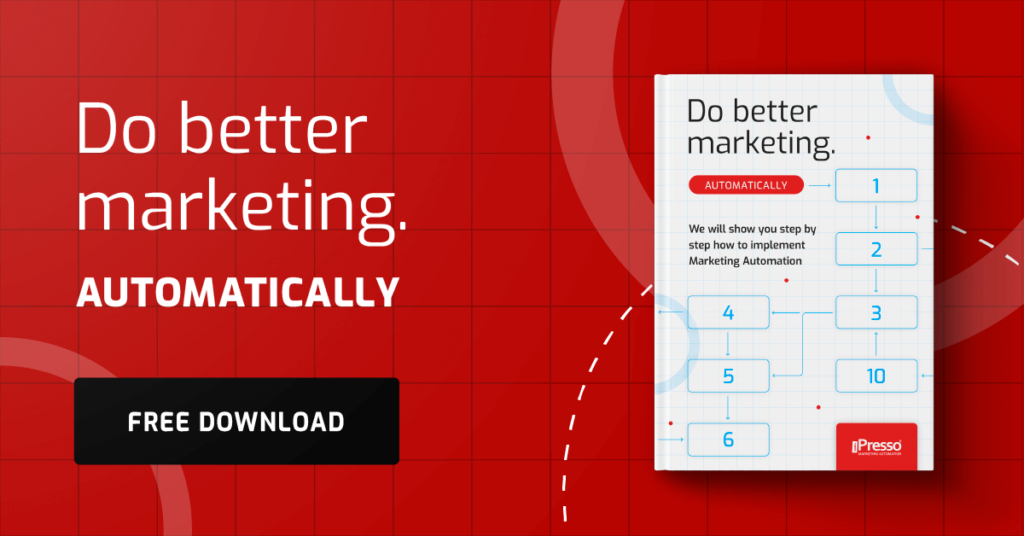B2B SaaS Playbook: How to Build an Automated Sales Funnel in 5 Steps

Is your B2B SaaS sales still based on manual lead management? If so, you are wasting time, energy, and most importantly, customers. In business, speed and scalability are what counts. This Playbook is a guide that will rescue you from the trap of manual processes. We will show you how to build a fully automated sales funnel a machine that independently warms up, qualifies, and onboards customers.
Step 1: Automated Lead Acquisition and Segmentation
Goal: How to get contacts to enter the system automatically and be sorted immediately, eliminating manual data entry.
Data is the foundation of any automated revenue generation process. You must ensure that a potential customer, upon interacting with your brand, is immediately channeled into the appropriate CRM or Marketing Automation system.
Automation Implementation:
Forms as the Entry Gate: Website forms (e.g., for downloading an e-book, registering for a webinar, or requesting a demo) must automatically push the contact into the Marketing Automation system. The customer enters the data, and the system instantly creates a new customer profile.
Instant Tag Assignment:The system immediately assigns tags to the new contact to facilitate further communication and segmentation.
Examples:
- An individual from the demo request form gets the tag: “demo request”.
- Someone downloading material about a specific feature gets the tag: “interested in feature X”.
- An event participant gets the tag: “lead from webinar Y”.
Initial Segregation: Automatic tagging allows for instantaneous database organization and lead grouping. This way, the system knows what content and communication paths to trigger for that contact in the subsequent steps.
This process eliminates chaos, giving you a clean, segmented database ready for further action.
Step 2: Automated Lead Nurturing
Goal: How to educate the lead, build trust, and demonstrate product value without involving the sales team.
Leads acquired in Step 1 are usually cold or lukewarm so they need education. This is the task of automated email campaigns, known as “drip campaigns.”
Automation Implementation:
Tag-Based Email Sequences: Based on the tags assigned in Step 1, the system automatically launches the appropriate email series.
Scenario: Someone downloaded an e-book on analytics. The system automatically sends them a series of 5 emails over the next 15 days:
- Email 1: “How others solved problem X (Case Study)”
- Email 2: “New features in analytics that change the game (Video Tutorial)”
- Email 3: “Invitation to a dedicated webinar on analytics”
- Email 4: “See for yourself – 5 key benefits (CTA to sign up for a free account)”
- Email 5: “Last chance: Request for a 15-minute demo”
Behavioral Scoring: A scoring system operates in the background of the campaign. This mechanism converts lead engagement into measurable points.
- Example Points: Email open (+5), Link click (+10), Visit to the pricing page (+20), Downloading additional content (+30).
- Negative Points: Unsubscribe (-50).
Scoring allows for precise measurement of the lead’s “heat level.” If the customer journey is correctly built, leads that reach the salesperson will already be well-acquainted with your case studies and product value.
Step 3: Automatic Qualification and Handover to Sales
Goal: How the system can independently recognize that a lead is “hot” and ready for a conversation, preventing the salesperson from wasting time on cold contacts.
This step is the bridge between marketing and sales. It is the moment when a lead is conscious and engaged enough that their handling should transition from marketing automation to individual interaction.
Automation Implementation:
Establishing the SQL Threshold: Based on the scoring from Step 2, a threshold must be set, which, when crossed, qualifies the lead as SQL (Sales Qualified Lead) (e.g., 100 points). This means the lead has shown sufficient engagement.
Automatic Handover Rules: When the lead reaches the SQL threshold, the system immediately triggers a series of actions:
- Sales Notification: An automatic notification is sent to a dedicated Slack channel (e.g., “NEW SQL: [Lead Name], Tag: #Advanced_Analytics”) or via email.
- Task Creation in CRM: A task is automatically created for the salesperson (e.g., “Call [Name] – SQL Lead”), assigning the contact and setting a priority.
- Status Change: The contact automatically changes status in the system from “Marketing Qualified Lead (MQL)” to “Sales Qualified Lead (SQL).”
The salesperson receives a data-backed notification (they see the history of interactions and scoring) and thus avoids wasting time on contacts that are not yet ready.
Step 4: Sales Process Automation
Goal: How to speed up and standardize the salesperson’s work so they can focus on the conversation rather than routine tasks.
A B2B SaaS salesperson’s role is not to write offer emails from scratch. In this step, automation takes over repeatable, administrative tasks.
Automation Implementation:
Email Templates and Sales Sequences: After a qualifying call, instead of drafting a summary email, offer, and follow-up meeting link, the salesperson launches a sequence with a single click.
- Sales Sequence: Summary email with offer. Automatic offer reminder. Invitation for a consultation (Day 7).
Follow-up Automation: If the salesperson schedules a meeting, the system automatically sends:
- An email confirming the date and the videoconference link.
- An automatic reminder 2 hours before the meeting.
Payment Automation: When a purchase decision is made, the salesperson sends an automatically generated, personalized link for online payment. After the transaction is recorded, the system automatically moves the customer from SQL status to Customer status, preparing the ground for Step 5.
Step 5: Automated New Customer Onboarding
Goal: How to ensure a great start for the customer and reduce the risk of churn during the crucial initial period.
Payment is not the end, but a new beginning. Poorly executed onboarding is the main cause of quick churn. The MA/CRM system must provide the customer with consistent and immediate support.
Automation Implementation:
Instant Welcome Pack: After payment is recorded (Step 4), the system immediately:
- Sends a welcome email with login details.
- Launches an email chain: “First Steps in Our Tool” (e.g., 5 emails every 2 days), with video tutorials and links to the help center.
- Automatically assigns the client to the appropriate list (e.g., “active clients”).
- After 7 days: An automated survey is sent (e.g., asking about initial impressions).
- Notifies the Customer Success Manager (CSM) to personally contact the client after 14 days.
Summary: Scale Your Business with Full Automation
A well-built, automated revenue generation process is the backbone of a modern SaaS company. It is not a one-time project but a continuously refined system that:
- Saves Time: You eliminate manual, repetitive tasks.
- Increases Conversion: Leads reach salespeople at the perfect moment—when they are hot and educated.
- Scales the Business: The machine operates 24/7, allowing you to grow without a disproportionate increase in headcount.
- Improves Customer Experience (CX): The customer receives a consistent, positive experience at every stage from the first email to smooth onboarding.
Start by implementing Steps 1 and 2. After building a solid foundation, move on to automatic qualification and sales. Build your automatic acquisition system and transform your SaaS company into a true, self-driving growth machine. Ready to implement this system in your business? Fill out the brief on our website, and we will contact you to discuss your automation strategy in detail.



